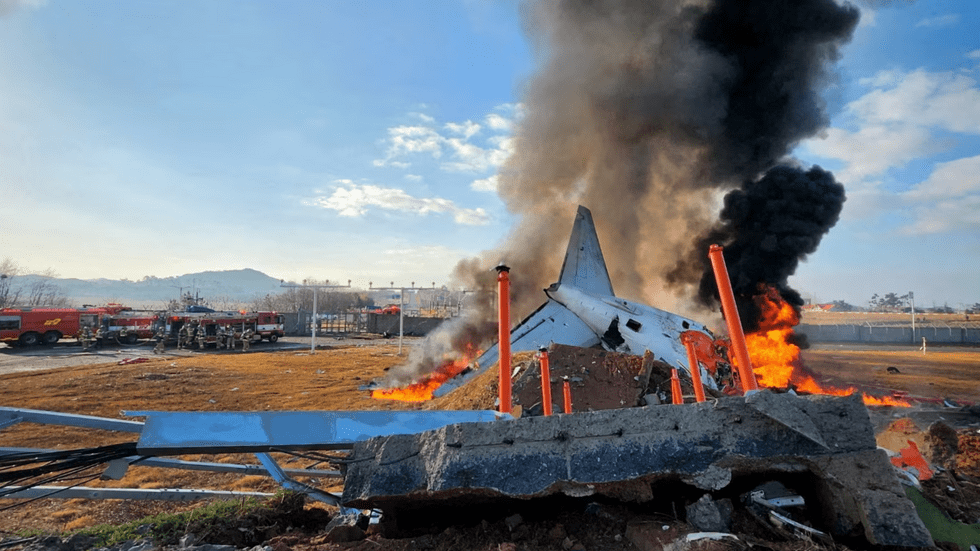Understanding the Tragic South Korean Plane Crash
A recent investigation has revealed that catastrophic pilot errors were directly responsible for a deadly plane crash in South Korea last December, which claimed the lives of 179 people. The incident occurred when a Jeju Air Boeing 737 was en route from Bangkok to Muan Airport. During the flight, the aircraft collided with a group of ducks, leading to a series of critical mistakes by the pilots.
The Pilot’s Mistake: A Critical Error
According to the findings, the crew made a fatal error by deactivating the wrong engine. Instead of shutting down the right engine, which was damaged by the bird strike, the pilots mistakenly turned off the left engine, which was still functioning. This decision left the plane without power as it attempted to land, significantly increasing the risk of a crash.
The aircraft continued its approach at high speed with the landing gear still raised. Pilots also deviated from standard procedures following the bird strike. They climbed back into the air, performed unorthodox maneuvers, and ultimately decided to make a rushed landing in the opposite direction on the same runway. Unfortunately, this led to the plane overshooting the tarmac and colliding with a reinforced barrier, resulting in a fire that engulfed the aircraft.
Survivor Stories and Emotional Reactions
Only two cabin crew members, who were positioned at the tail section of the aircraft, managed to escape the blaze alive. Their survival highlights the severity of the disaster and the chaos that ensued during the crash.
Investigations have indicated that a pilot may have mistakenly turned off the engine. Officials stated that the pilot should have shut down the right engine, which was severely damaged by the bird strike, but instead, they turned off the left engine, which was still spinning. This action caused the black box and power to go out, further complicating the situation.
Family Reactions and Concerns
Relatives of the victims reacted with fury to the preliminary findings during a chaotic press briefing. Some family members entered the conference room, expressing their anger and frustration. One man shouted, “They’ve just blamed it all on the pilots.” In response, officials quickly collected report copies from journalists present, insisting that the document had not been officially published.
Kim Yu-Jin, representing the victims’ families, criticized the conclusions as “unconvincing” and warned that the findings might affect the compensation that relatives could receive. She expressed concern over the lack of detailed information provided to the families.
Despite the protests from the families, investigators maintain that no mechanical defects contributed to the crash, which is now considered South Korea’s deadliest aviation accident in recent memory. However, the investigation faces additional challenges, as the aircraft’s recording devices stopped functioning four minutes before impact, leaving gaps in the timeline of events.
Ongoing Challenges and Future Steps
The investigation continues to face obstacles, including the lack of complete data from the aircraft’s recording devices. This has raised concerns about the accuracy and completeness of the findings. Kim emphasized the importance of careful communication of the investigation results, as the way the findings are disclosed can influence the compensation process for the families.
As the investigation progresses, it remains crucial to ensure transparency and thoroughness in understanding the causes of the crash. The tragic event serves as a reminder of the importance of adhering to safety protocols and the need for continuous improvement in aviation practices.







